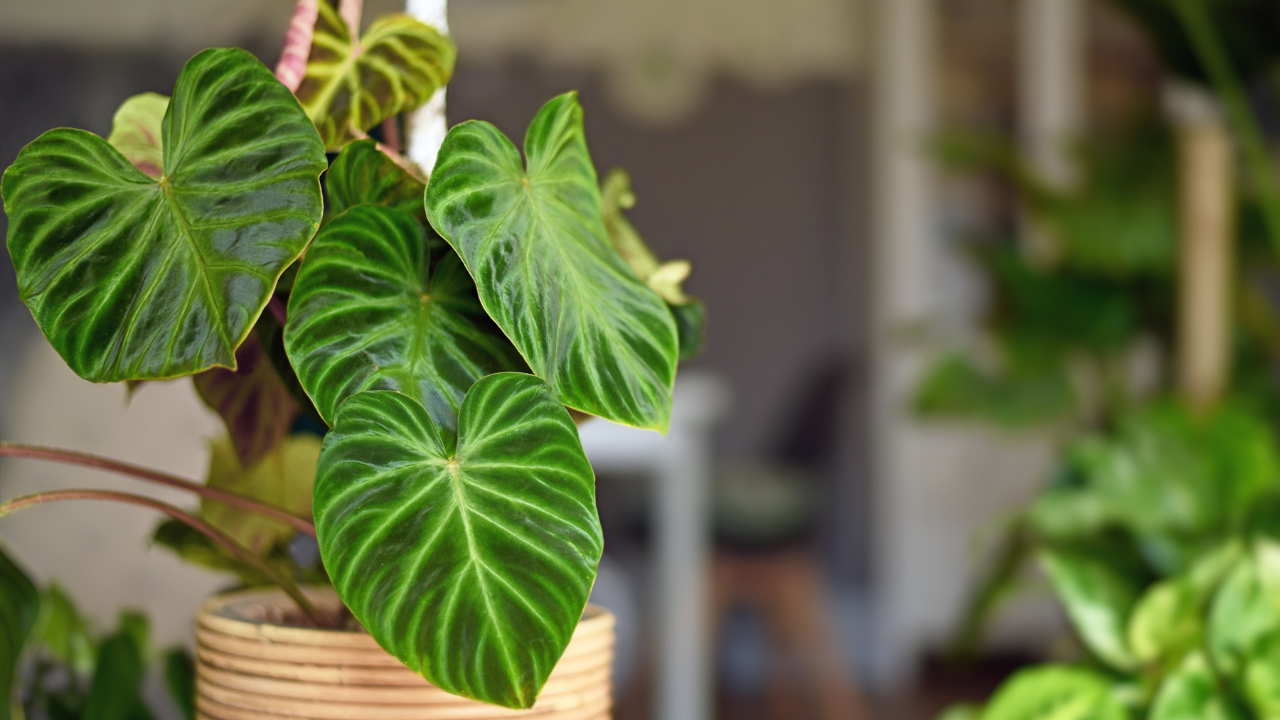Philodendrons are beloved for their lush, tropical foliage and relatively easy care requirements. These versatile plants come in a variety of shapes and sizes, making them a popular choice for both novice and experienced gardeners. To keep your philodendron thriving, it’s important to understand their specific needs. Here are ten essential care tips to help your philodendron flourish.
1. Light Requirements
Philodendrons thrive in bright, indirect light. They can tolerate lower light conditions, but their growth may slow down, and the leaves might not be as vibrant. Direct sunlight can scorch their leaves, so it’s best to place them near a north or east-facing window where they can receive filtered light.
If natural light is insufficient, you can use fluorescent or LED grow lights to supplement. These lights should be placed about 12 inches away from the plant and used for about 12-16 hours a day to mimic natural conditions.
2. Watering Schedule
Watering philodendrons properly is crucial for their health. They prefer consistently moist soil but do not like to sit in water. Allow the top inch of soil to dry out before watering again. Overwatering can lead to root rot, a common issue with philodendrons.
During the growing season (spring and summer), you might need to water more frequently. In the dormant season (fall and winter), reduce watering to prevent waterlogged soil. Always use a pot with drainage holes to ensure excess water can escape.
3. Humidity Levels
Philodendrons are native to tropical regions, so they thrive in high humidity environments. Ideally, they should be kept in a room with 60-70% humidity. If your home has dry air, especially in winter, consider using a humidifier or placing a water tray near the plant to increase moisture levels.
Grouping plants together can also help create a microclimate with higher humidity. Additionally, misting the leaves regularly can provide a humidity boost, but avoid misting too often to prevent fungal issues.
4. Temperature Preferences
Philodendrons prefer warm temperatures, ideally between 65-80°F (18-27°C). They can tolerate slightly cooler temperatures at night but should be kept away from drafts, sudden temperature changes, and cold windows. Consistent temperatures help maintain steady growth and prevent stress.
Avoid placing your philodendron near heating vents or air conditioners, as these can create fluctuating temperatures. In colder months, ensure your plant is not exposed to temperatures below 55°F (13°C) as this can cause damage.
5. Soil and Potting Mix
A well-draining, aerated potting mix is essential for philodendrons. They prefer a soil mix that retains moisture without becoming waterlogged. A good mix can include peat moss, perlite, and pine bark. This combination ensures proper drainage and allows roots to breathe.
Repotting every 1-2 years is recommended to refresh the soil and provide room for growth. When repotting, choose a pot that is slightly larger than the current one to avoid excessive soil that can retain too much moisture.
6. Fertilizing Needs
Philodendrons benefit from regular feeding during the growing season. Use a balanced, water-soluble fertilizer every 4-6 weeks in spring and summer to promote healthy growth and vibrant foliage. Reduce feeding in the fall and winter when the plant’s growth slows down.
Over-fertilizing can lead to salt buildup in the soil, which can harm the plant. It’s essential to follow the recommended dosage and occasionally flush the soil with water to remove any excess salts.
7. Pruning and Maintenance
Regular pruning helps maintain the shape and size of your philodendron and encourages bushier growth. Remove any yellowing or damaged leaves to keep the plant looking healthy. Use clean, sharp scissors or pruning shears to make clean cuts just above a leaf node.
If your philodendron becomes leggy, you can trim back the stems to encourage new growth. Pruning also helps manage the plant’s size, preventing it from becoming too large for its space.
8. Pest Management
Philodendrons are relatively resistant to pests but can occasionally be affected by common houseplant pests such as aphids, spider mites, and mealybugs. Regularly inspect the leaves and stems for any signs of infestation, such as webbing, sticky residue, or visible insects.
To treat pests, wipe down the leaves with a mixture of water and mild soap. For more severe infestations, you may need to use an insecticidal soap or neem oil. Isolate the affected plant to prevent the pests from spreading to other houseplants.
9. Supporting Climbing Varieties
Many philodendron varieties are climbers and will benefit from some form of support, such as a moss pole or trellis. Providing support allows these plants to grow upward, which can save space and enhance their aesthetic appeal.
Tie the stems gently to the support structure using soft ties or plant clips. As the plant grows, continue to secure new growth to the support to ensure it remains stable and climbs effectively.
10. Repotting Tips
Philodendrons grow relatively quickly and may need to be repotted every 1-2 years. Signs that your plant needs repotting include roots growing out of the drainage holes, slow growth, or soil that dries out too quickly. Choose a pot that is 1-2 inches larger in diameter than the current one.
When repotting, gently remove the plant from its pot and shake off excess soil. Trim any dead or damaged roots before placing the plant in fresh potting mix. Water thoroughly after repotting to help the plant settle into its new home.
By following these care tips, you can ensure your philodendron remains a healthy and vibrant addition to your indoor garden. With the right attention and care, these beautiful plants can thrive and bring a touch of the tropics to your home.

